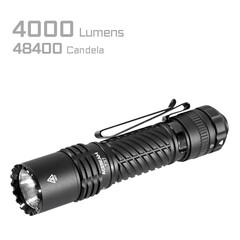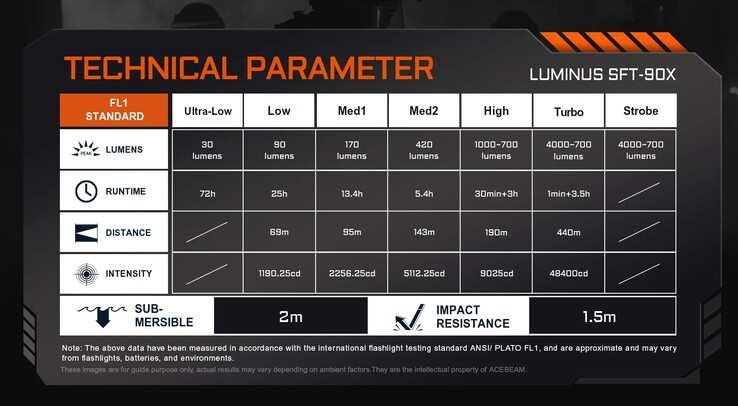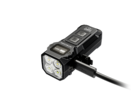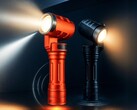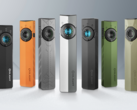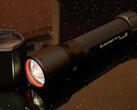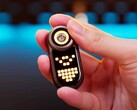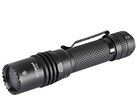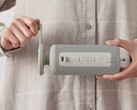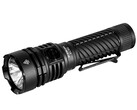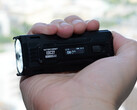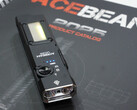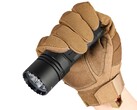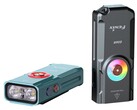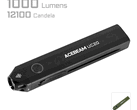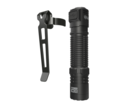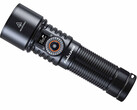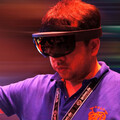Acebeam has just launched a new flashlight, the T37. According to the technical data, it delivers up to 4,000 lumens with a maximum range of 440 meters. However, as is typical for Acebeam, the highest mode is limited only for a short time, i.e., one minute. A further 3.5 hours can be achieved at lower levels. If you only use the flashlight at 30 lumens, you can expect a battery life of 72 hours according to Acebeam. More information on the various runtimes can be found in the chart below at the end of the article.
A cool white LED with 6,500K is installed. This is powered by a 21700 rechargeable battery with a capacity of around 18 watt hours, which can be replaced if necessary. The battery is charged inside the flashlight; there is a concealed USB-C port on the head of the T37 for this purpose. A full recharge is said to take 2.5 hours. The capacity is indicated by an LED on the switch: blue means at least 30% remaining capacity, while red means 10-30%. If the battery falls under 10%, the LED flashes.
The switch itself can be pressed halfway to switch the flashlight on briefly. Modes are switched via a rotary switch on the back, which can also be used to lock the flashlight. A two-way clip allows it to be attached to a cap or belt. At 200 grams, however, it's not exactly lightweight for a cap attachment. Lastly, the flashlight itself is 14.5 cm long.
The T37 is available for just under $130, but only on Acebeam's online store. The flashlight is not yet available in Acebeam's Amazon store.




